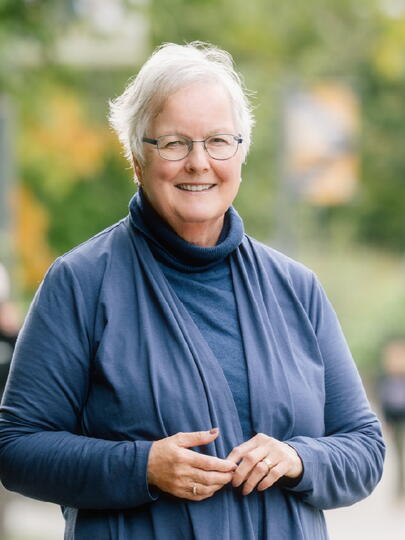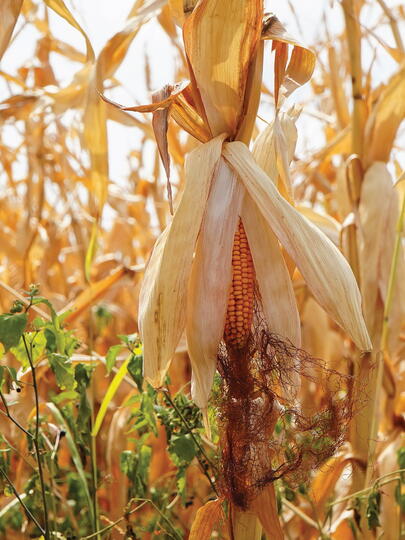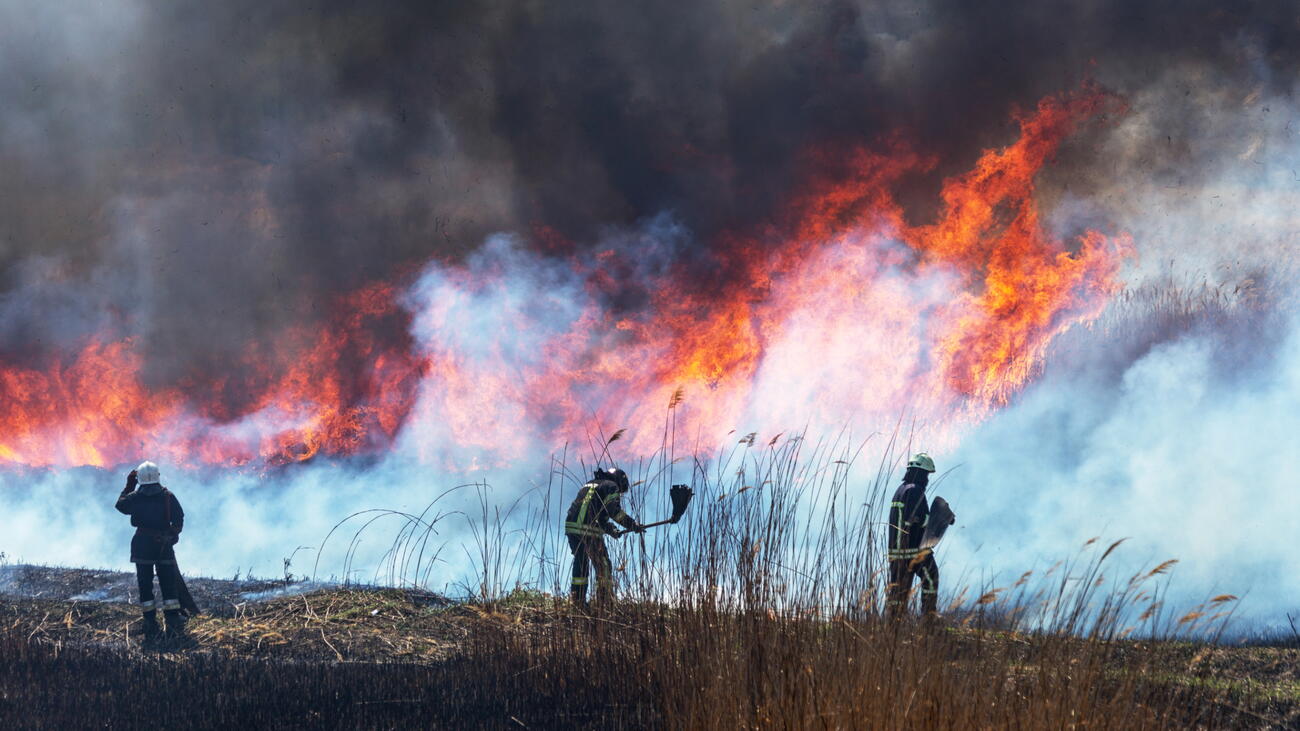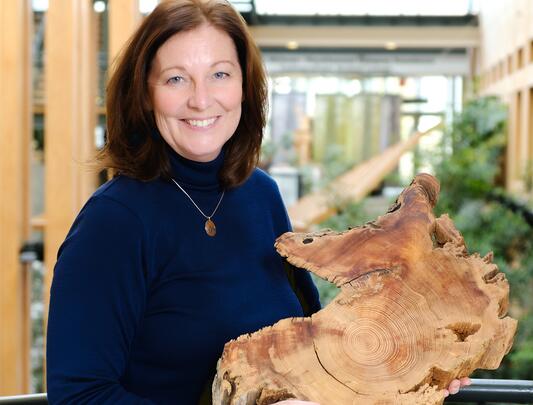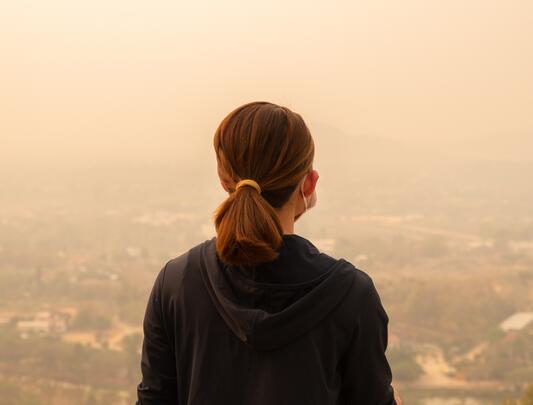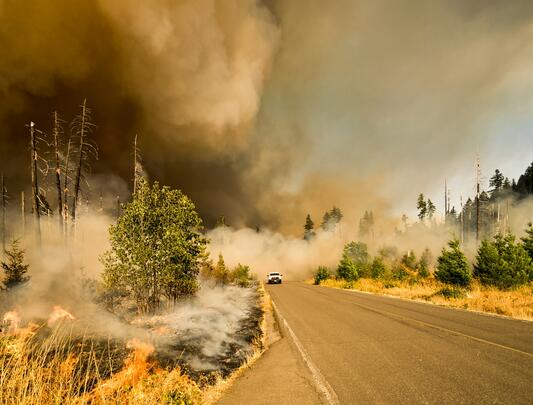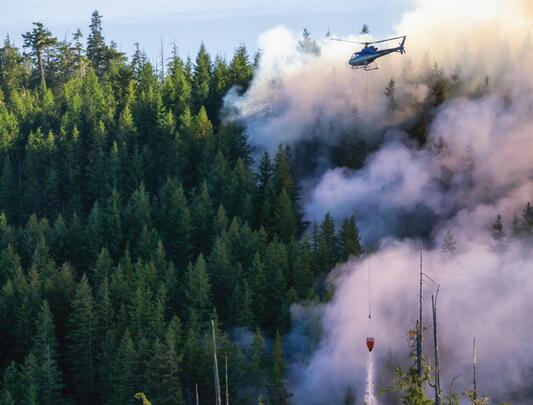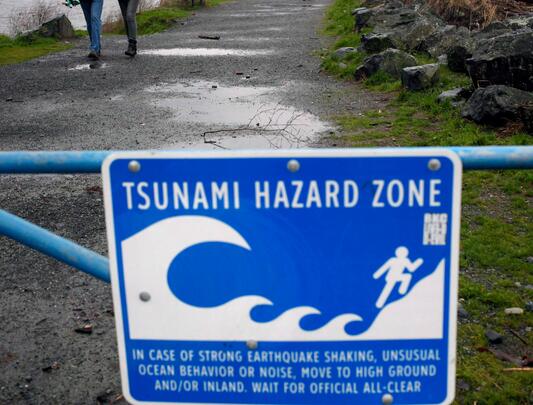This wildfire season is going to be intense. Here’s what to expect
With Canada’s 2025 wildfire season starting earlier and more intensely than usual, UBC experts break down what’s behind the shift and how to prepare for what’s ahead.
Canada’s wildfire season has had an early and intense start, with states of emergency declared in Saskatchewan and Manitoba and forecasts warning of severe conditions across central and eastern Canada. Wildfire smoke is already crossing borders, affecting millions.
In this Q&A, wildfire experts Dr. Lori Daniels (MSc'94), and Dr. Mathieu Bourbonnais, co-directors of UBC's Centre for Wildfire Coexistence, explain what’s driving early activity and how communities can prepare. Air quality expert Dr. Christopher Carlsten weighs in on health precautions.
What should people expect this season?
Dr. Lori Daniels (LD): We’re already seeing a worrying start to the wildfire season. When two provinces are under emergency orders in early June, it’s a clear sign we’re in for another difficult summer. Drought, May heat and dense forest fuels are all feeding early fires. My rule of thumb: If there are widespread campfire bans by Canada Day, it’s likely to be a challenging fire season.
Dr. Mathieu Bourbonnais (MB): Spring fires in northern regions like Saskatchewan and Manitoba aren’t unusual due to thinner snowpack and fast-drying boreal forests. This is the spring dip — the drying period between spring melt and when the deciduous trees in boreal forests leaf out — when forests are highly flammable. But this year’s activity has been especially intense due to extreme heat and dryness, which have left forests primed to burn. We’re seeing more frequent early-season fires, driven by long-term drying.
What’s happening across Canada?
MB: In BC, early activity is in the north which is typical for this time of year. The Okanagan and Central Interior tend to see mid-to-late summer fires. This spring’s rainfall in the Okanagan may help, but the key is how fast the region dries out and whether drought returns. The El Niño to La Niña transition may bring unstable weather, complicating predictions.
In Eastern Canada, fire patterns differ due to mixed hardwood and conifer forests, but the basics remain the same: Dry spells prime fuels. Spring and early summer drying will be critical.
LD: Many still believe wildfire “can’t happen here” but our climate and forests have changed. Spring starts earlier, forests dry out faster, and they stay flammable longer. And because northern latitudes are warming faster than the global average, Canada is being impacted by extreme fires.
Since 2017, over 7.3 million hectares have burned in BC, more than twice the size of Vancouver Island. But this isn’t just a rural or BC issue — it’s a national threat.
What can we do to prepare for wildfire?
LD: Start “FireSmarting” your property by cleaning gutters, removing debris within a metre of your house, and moving firewood away from your home. Pack a go-bag with essential items and include comfort items like a favourite toy for the kids. Get involved with local FireSmart and fuel-clearing programs. Wildfire resilience is a shared responsibility.
MB: Check local fire bans, be cautious with campfires or machinery, and understand how fire danger can escalate rapidly when the weather shifts.
In future, we need more proactive tactics such as fuel mitigation, prescribed burns, and cultural fire. Currently, suppression efforts still dominate and firefighting crews are stretched thin, working long stretches with little rest.
What can we do to prepare for wildfire smoke?
Dr. Christopher Carlsten: Wildfire smoke is more than a nuisance; it can worsen asthma, trigger cardiac events, and impact mental health due to prolonged stress and confinement indoors.
The smoke doesn’t respect provincial or even national borders, so coordinated public health responses are more important than ever, especially in cities far from the flames.
Canadians should prepare clean air shelters, especially for vulnerable groups, such as rooms with HEPA filters or a designated community cooling or clean-air centre. Wearing well-fitted masks, especially N95s, helps, and reducing activity on days with poor air quality can further reduce risk.
